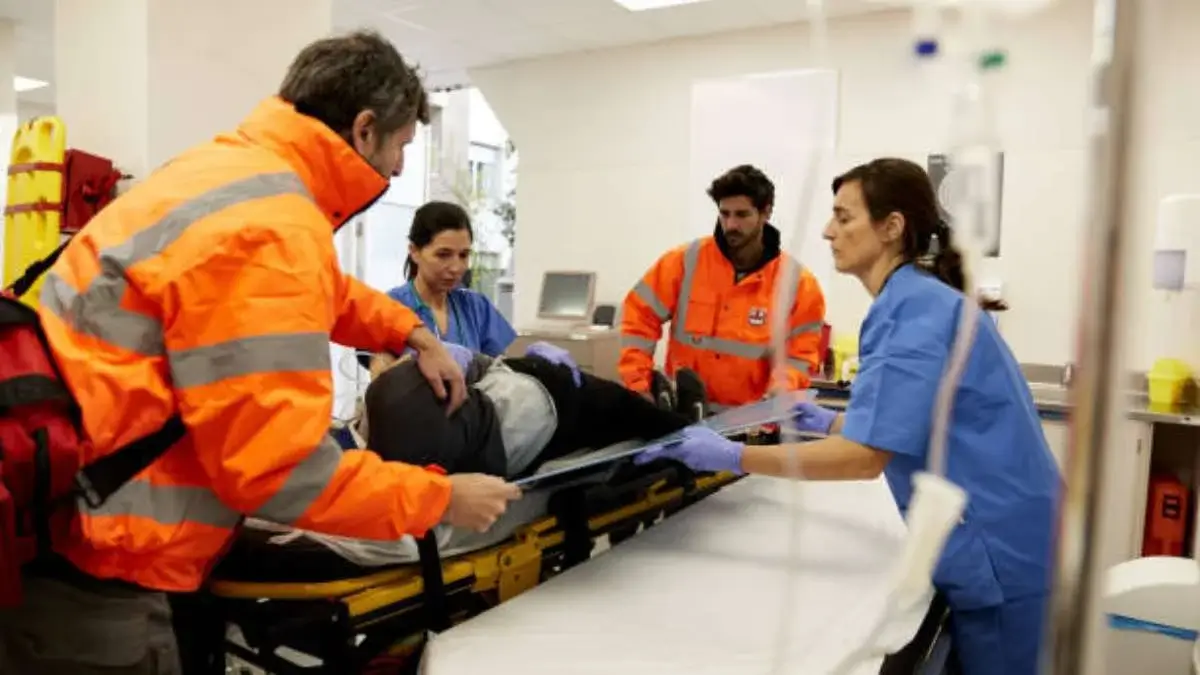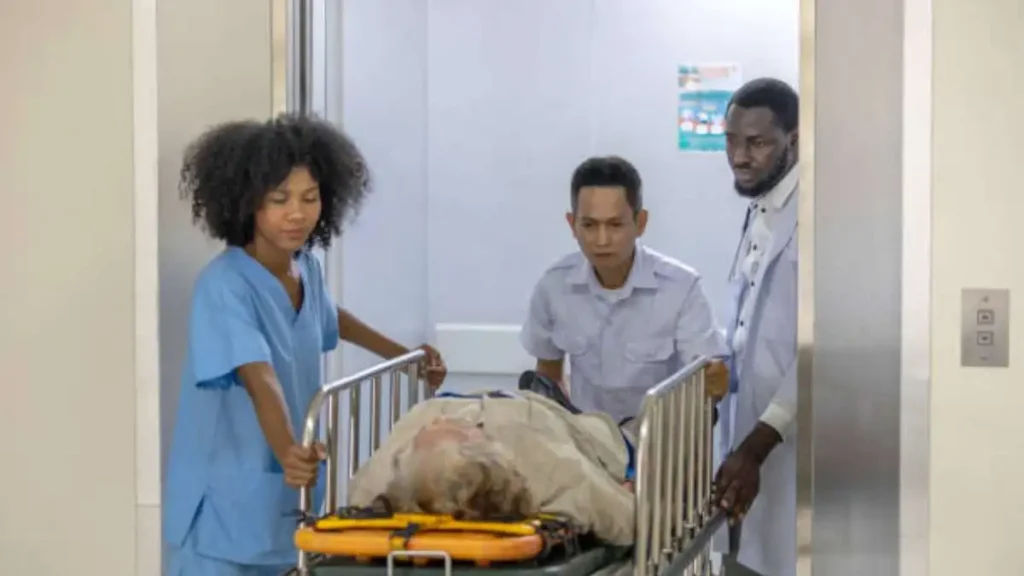HEALTH AND FITNESS
The Importance of Efficient Patient Transfers in Healthcare

Efficient patient transfers are crucial in the healthcare industry, impacting patient outcomes, hospital efficiency, and overall healthcare costs. As healthcare systems worldwide strive for better patient care, understanding the significance of streamlined patient transfers becomes increasingly vital. This article explores why efficient patient transfers are essential and how they contribute to a high-functioning healthcare system.
Table of Contents
Understanding Patient Transfers
What Are Patient Transfers?
Patient transfers involve moving patients from one location to another within a healthcare facility or between different facilities. These transfers can occur between hospital departments, from one hospital to another, or from a hospital to a rehabilitation center or home. The process includes various stages, such as initial assessment, preparation for transfer, actual transportation, and post-transfer care.
Types
- Internal Transfers: Movement within the same facility, such as from the emergency department to the intensive care unit (ICU).
- Inter-Hospital Transfers: Relocation from one hospital to another, often for specialized care.
- Discharge Transfers: Transition from hospital to home or to another type of care facility, like a nursing home or rehabilitation center.

The Impact of Efficient Patient Transfers
Enhancing Patient Outcomes
Efficient patient transfers are directly linked to better patient outcomes. Timely and well-coordinated transfers ensure that patients receive the appropriate level of care without unnecessary delays. For example, a swift transfer to an ICU can be critical for a patient requiring intensive monitoring and treatment. Conversely, delays can lead to deteriorating health conditions and, in severe cases, can be life-threatening.
Improving Hospital Efficiency
Hospitals operate under immense pressure to manage bed availability and patient flow. Efficient patient transfers help in optimizing bed utilization, reducing overcrowding, and minimizing wait times in emergency departments. This streamlined process allows hospitals to handle more patients effectively and provide timely care, which is essential for maintaining high standards of healthcare delivery.
Reducing Healthcare Costs
Inefficient patient transfers can lead to increased healthcare costs due to extended hospital stays, repeated diagnostic tests, and potential readmissions. By ensuring that patients are transferred appropriately and promptly, healthcare facilities can reduce unnecessary expenditures. Additionally, efficient transfers can decrease the burden on emergency services and improve overall resource management.
Key Elements of Efficient Patient Transfers
Clear Communication
Effective communication among healthcare professionals is crucial for successful transfers. This includes clear handoff procedures, detailed transfer notes, and real-time updates. Ensuring that all relevant information is accurately conveyed minimizes the risk of errors and ensures continuity of care.
Proper Documentation
Accurate documentation is essential for tracking a patient’s journey and providing the receiving team with all necessary medical history, treatment plans, and current health status. Comprehensive documentation supports better decision-making and reduces the chances of adverse events during and after the transfer.
Use of Technology
Technology plays a significant role in enhancing patient transfer efficiency. Electronic Health Records (EHR) systems, telemedicine, and real-time tracking tools enable seamless communication and coordination. These technologies help in monitoring patient progress, managing logistics, and ensuring that all team members have access to up-to-date information.

Training and Protocols
Healthcare providers must be adequately trained in transfer protocols to handle the process smoothly. Standardized procedures and regular training sessions ensure that staff are familiar with best practices and can respond effectively to various scenarios. This preparedness is vital for maintaining high-quality care during transfers.
Challenges
Logistical Issues
Transporting patients, especially those in critical condition, can be logistically challenging. Ensuring the availability of transport vehicles, coordinating with multiple departments, and managing the timing of transfers require meticulous planning and execution.
Communication Barriers
Miscommunication between healthcare teams can lead to errors during patient transfers. Language barriers, incomplete information, and lack of standardized handoff protocols can all contribute to ineffective transfers. Addressing these communication challenges is essential for improving transfer outcomes.
Patient and Family Anxiety
Patient transfers can be stressful for both patients and their families. Clear communication, reassurance, and involving families in the transfer process can help alleviate anxiety and ensure a smoother transition.
Strategies for Improving Patient Transfers
Implementing Standardized Transfer Protocols
Developing and adhering to standardized transfer protocols can significantly improve the efficiency of transfering patients. These protocols should outline the steps involved, the responsibilities of each team member, and the necessary documentation, ensuring a consistent and reliable transfer process.
Leveraging Technology
Investing in advanced technology solutions can streamline the transfer process. For example, using EHR systems for real-time data sharing, employing telemedicine for remote consultations, and utilizing GPS tracking for transport vehicles can all enhance coordination and efficiency.
Continuous Training and Education
Ongoing training and education for healthcare staff are vital for maintaining high standards in patient transfers. Regular workshops, simulation exercises, and refresher courses can help staff stay updated on best practices and new technologies, ensuring they are well-prepared for transfer scenarios.
Conclusion
Efficient patient transfers are a cornerstone of effective healthcare delivery. They play a crucial role in enhancing patient outcomes, improving hospital efficiency, and reducing healthcare costs. By focusing on clear communication, proper documentation, leveraging technology, and continuous staff training, healthcare facilities can ensure that transfer of patients are conducted smoothly and safely. Prioritizing efficient patient transfers not only benefits individual patients but also contributes to the overall effectiveness and sustainability of the healthcare system.
-

 GENERAL2 months ago
GENERAL2 months agoUncovering the World of кинокрадко: The Dark Side of Film Piracy
-

 GENERAL1 month ago
GENERAL1 month agoUnveiling the Art of преводсч: How Translators Bridge Language Barriers
-

 YOGA1 year ago
YOGA1 year ago4 Person Yoga Poses for Beginners
-

 GENERAL3 weeks ago
GENERAL3 weeks agoChristofle – For Those Who Dream of Family Heirloom Silver


























